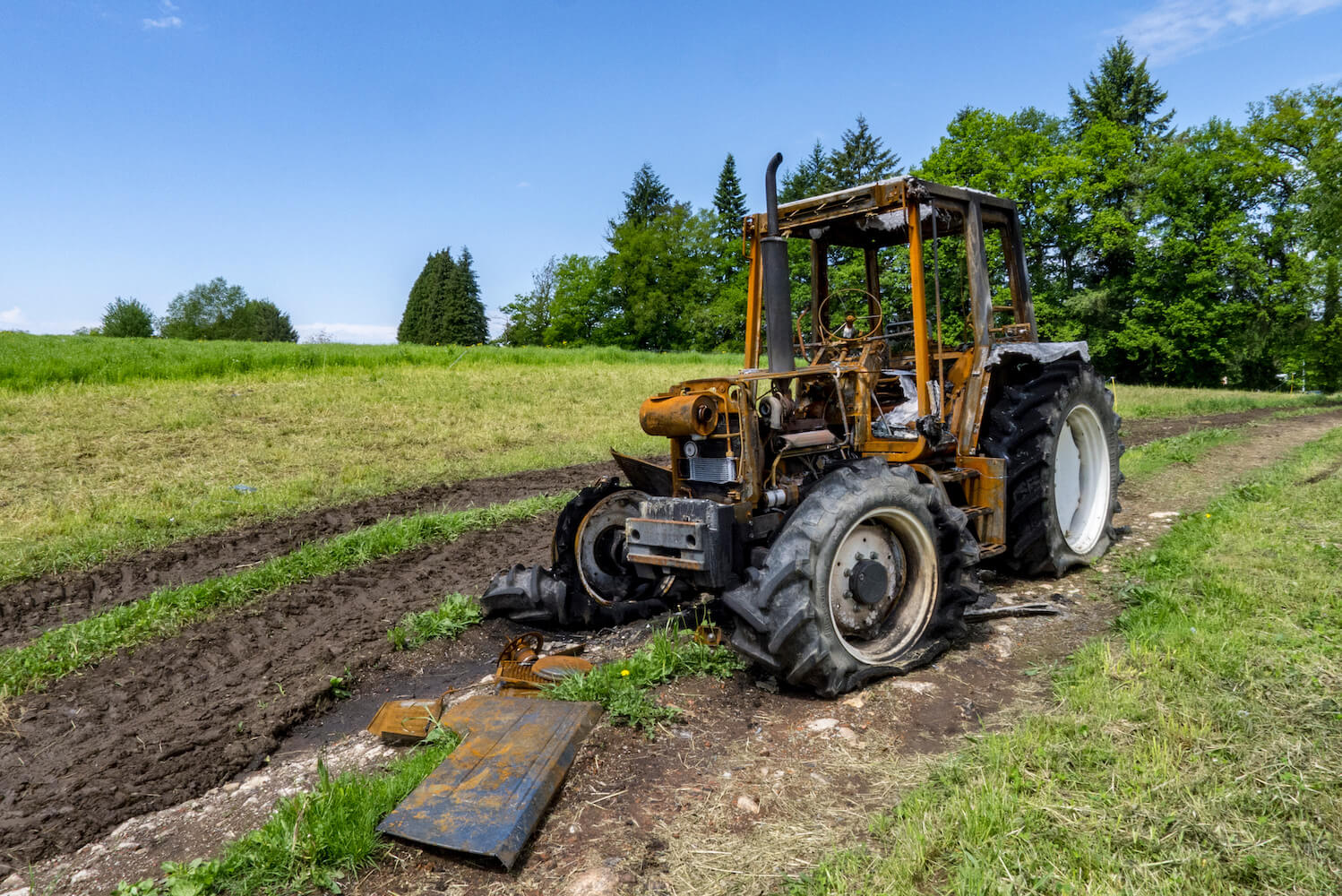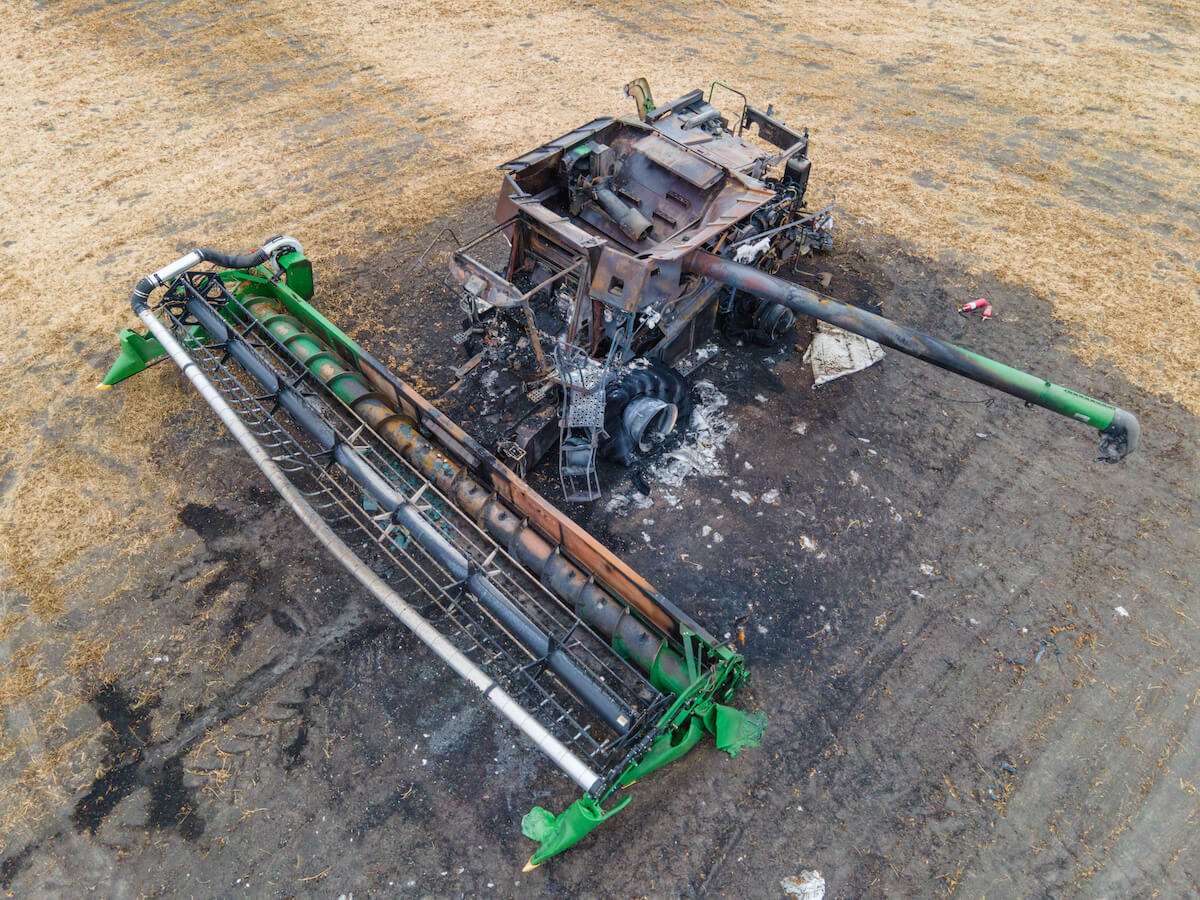
Investigating Heavy vehicle fires – A Rigorous Process

From excavators to tractor trailers, to passenger busses, heavy vehicles operate in every facet of society. They transport food and consumer goods from coast to coast, work in mining, agricultural, forestry and energy sectors, and transport people in our cities. These vehicles operate in a multitude of environments and undergo enormous variation in stresses. We are here today to talk to Geoff Wowk, P.Eng., CFEI, CVFI, of our Edmonton office about the fires that happen in these vehicles.
1. First, can we start with what a heavy vehicle is?
Well, we would typically classify heavy equipment as anything with a weight rating over 10,000 pounds in the gross vehicle weight rating. So, that can be anything from, in the oilfield industry, vacuum trucks to drilling equipment, tractor trailers that are travelling on our highways, in terms of forestry equipment, we’re looking at excavators, feller bunchers, skidders and dozers, and in terms of farming equipment we generally look at tractors, combines and bailers.
2. That is a lot of variety… So, in terms of fires, what are the most common causes we might see in an insurance claim?
Although each investigation is unique, we do see some typical causes on those kinds of fires. Typical causes might be an electrical short on the battery starting and charging systems, as well as vaporized oil onto a hot surface like a turbocharger or an exhaust component in the engine compartment. So, we’re looking at engine oil levels, hydraulic oil levels, transmission fluid levels, all the typical things that an engine needs to operate.

3. Ok, so, what are the first things you look at when you start investigating a fire on a piece of heavy equipment?
When we get an assignment, we like to do some additional research, which includes collecting the Vehicle Identification Number (VIN). We use that VIN to do some research on whether there are any outstanding recalls on that piece of equipment, and we can use it to identify parts that we need to research more down the line. We also do research on wind patterns where the vehicle caught fire so we can find GPS locations and do wind pattern and temperature research on the equipment. We also like to collect the maintenance records, so that we can review them and get familiar with the vehicle to see what has been done to the vehicle, what changes have been done recently, and whether they may have contributed to the cause of the fire.
We also like to contact the operator and get some witness statements to identify, when they were on scene, how the vehicle was operating, was there any alerts on the dashboard, was there any loss of function on the equipment, and that can help us narrow down what problems there were and whether they existed at the time of the fire. And lastly, we like to try and get some videos or photographs of the fire in its early stages. Sometimes the operators say, “are you crazy? I was running for my life; I didn’t have time to pull out my camera!” Sometimes they leave their phone or camera inside the vehicle, and other times people go, “that was awesome!” and they take 3-4 photos and videos. That’s helpful in pinning down the area of origin.
Then, once we get on site, we like to do a full 360 of the piece of equipment, understand the ground patterns. Fire patterns on the ground can help us figure out how the wind was blowing and bring us back to the area of origin. And then we can look at those technical types of potential causes of the fire. We look at the battery starting and charging systems, as well as the fluids and hydraulic lines in and around the piece of equipment.

4. You mentioned maintenance records – is that often the cause of heavy vehicle or equipment fires?
Maintenance is definitely something that has to be considered. The manufacturer usually provides a schedule of maintenance that needs to be adhered to, so you have to make sure you are going through and following those maintenance procedures. If not, that can lead to some issues down the line. For example, hydraulic hoses have a specific life cycle, so they are supposed to be changed after x amount of hours or they are deemed no longer in service and should be replaced. So, that’s some of the things we look at in terms of maintenance, as well as any aftermarket additions to the vehicle or equipment. What types of aftermarket additions were put in, when were they put in and were they done by a professional or how were they installed.
5. Circling back to aftermarket parts, why are they such a big issue?
Aftermarket parts can be a contributing factor in a fire because, for example, on the electrical side of things if the conductors aren’t large enough to handle the amount of current running through them, or if they aren’t routed properly or are routed over sharp corners, whether or not those parts are fused, these are all potential causes of fires and have to be examined and ruled out.
6. In your opinion, what is the most important thing for an adjuster to remember when they are handling a claim related to a heavy vehicle?
From our side of things, if you have a large loss, it’s best to reach out early. The earlier an investigator gets hired on these types of losses, the earlier we can collect some of that information when it is fresh (especially from witnesses, the memory fades as time goes on, and the earlier we can get those recollections from the operator the better.)
Also, the earlier we can get out on site, the better because there is a lot of information that we can collect from site [seeing] the rest location of the failed or fire damaged piece of equipment. That can include some of the parts that dropped down on the ground, which provide clues and help us come to an opinion on the cause of the fire. The earlier we can get out there, the better, so that would be something that I think would help the adjuster. Typically, we’re trying to look at whether there’s a design issue, a manufacturing issue, an installation issue or a maintenance issue, so the earlier we can get out there, the better for our investigation.
Thanks Geoff, this has been really helpful!
